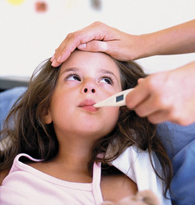Dehydration among toddlers is an issue that should not be taken lightly. Once it is suspected, the body does not have enough fluids to function properly. In severe cases, it can lead to brain damage or even death.
Is my child at risk for dehydration?
Dehydration occurs if more fluid is eliminated from the body. Children are prone to dehydration due to their smaller bodies.
Some toddlers become dehydrated since they do not drink enough water. Certain factors that puts a child at risk include the following:

- Vomiting
- Fever
- Excessive sweating
- Diarrhea
- Exposure to warm and humid weather
- Poor intake of fluid during an illness
- Chronic ailments such as a bowel disorder or diabetes
What are the warning indications in toddlers?
Dehydration can develop slowly over time or occur abruptly. Toddlers with certain ailments especially the stomach flu must be closely monitored for signs of dehydration. Remember that the warning signs are not always evident.
Do not wait until a child is excessively thirsty. If the child is really thirsty, he/she might already be dehydrated. The usual warning signs to watch out for include:
- Dark-colored urine
- Dry, cracked lips
- Excessive fussiness
- Cold or dry skin
- Diminished or lack of urine for 8 hours
- Rapid breathing or heart rate
- Sunken eyes or sunken soft spot on the head (for infants)
- Lack of tears when crying
- Excessive sleepiness
- Low energy level
In severe cases, the child might become delirious or loses consciousness.
Management
The only effective way to manage dehydration is to restore the lost fluids. A mild case of dehydration can be treated at home. In case the toddler is vomiting or has fever or diarrhea or shows any of the signs of dehydration, the following steps must be taken:
- Provide the child with an oral rehydration solution. These solutions include water and salts in the right proportions and readily digested. Take note that plain water is not enough. In case an oral rehydration solution is not available, you can provide milk or diluted juice until one is available.
- If the child is being breastfed, continue to do so. You can also provide the child with rehydration solution in a bottle.
- Make sure that the child is given liquids slowly until the urine is clear. If the child is vomiting, provide a small amount at a time until the child can keep it down. Gradually increase the frequency and amount. Remember that giving too much too quickly can cause vomiting to return.
